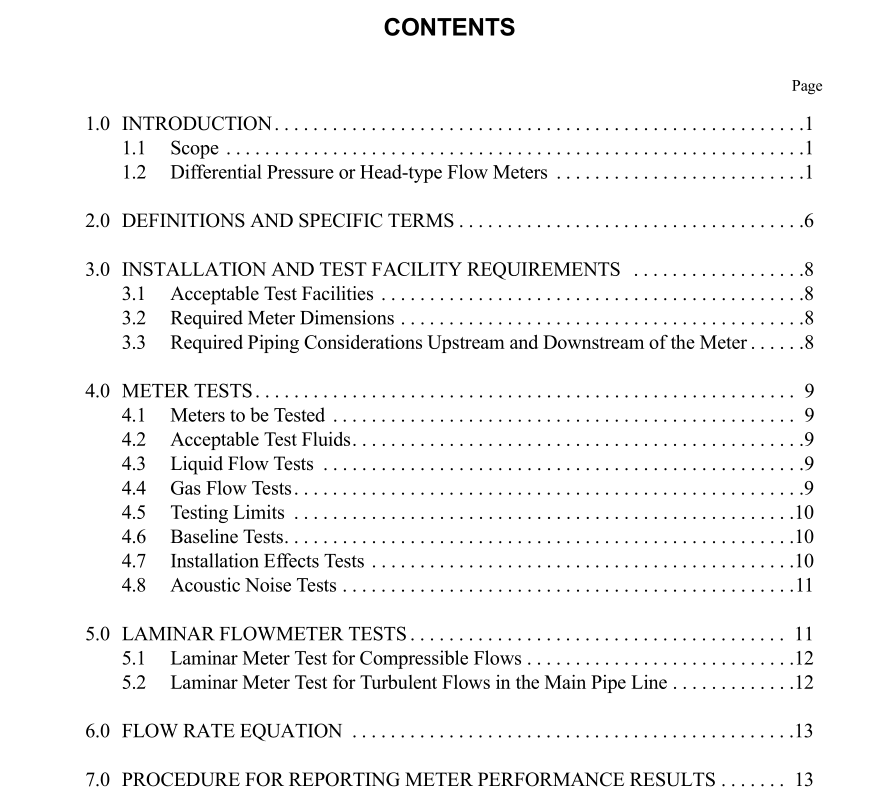API MPMS 22.2 pdf download

API MPMS 22.2 pdf download.Manual of Petroleum Measurement Standards Chapter 22—Testing Protocol
1.1 SCOPE
The testing protocol is limited to single-phase Newtonian fluid flow, and no consideration is given to pulsation effects. Further revisions of this document may include the testing of such meters in wet gas or multi-phase service and the effects of pulsation. This standard does not address testing protocols of those devices that operate on the principle of critical or choked flow condition of fluids. The testing protocol covers any flow meter operating on the principle of a local change in flow velocity, caused by the meter geometry, giving a corresponding change of pressure between two reference locations. There are several types of differential pressure meters available to industry. It is the pur- pose of this standard to illustrate the range of applications of each meter and not to endorse any specific meter. The basic principle of operation of the flow measuring devices follows the physical laws relating to the conservation of energy and mass for the fluid flows through the device. Any existing or later developed API MPMS document addressing a specific type or design of differential pressure flow measuring device will supersede the requirements of this document. An example of one such existing standard is API Manual of Petroleum Measurement Standards, Chapter 14.3 “Concentric, Square-Edged Orifice Meters.”
1.2 DIFFERENTIAL PRESSURE OR HEAD-TYPE FLOW METERS
The operating principle of a differential pressure flow meter is based on two physical laws – the conservation of energy and conservation of mass, where changes in flow cross-sectional area and/or flow path produce a differential pressure, which is a function of the flow velocity, fluid path, and fluid properties. The following diagrams are presented as examples of some of the possible differential pressure devices. Other variations of meter designs are available and possible. It is the intention of this Testing Protocol that no differen- tial pressure meter should be excluded. Therefore, the exam- ples presented are of eligible meters and the document is not limited to these meter types alone.
2.0 Definitions and Specific Terms
The definitions are given to emphasize and clarify the par- ticular meaning of terms as used in this document. 2.1 meter: A meter is the assembly of a primary element, a differential producer holder with the upstream and down- stream meter tubes that will generate a differential pressure when placed in a flow stream. The differential pressure is monitored by secondary device(s) (section 2.6) to derive the flow rate. 2.1.1 meter asymmetry: Meter asymmetry refers to the orientation of specific items in the meter in this document. For example, it may refer to the position of the differential tap holes, or the orientation of supports within the meter which are not symmetrically placed throughout the diameter. 2.2 primary element or differential producer: The primary element is defined as the differential producer when placed in a flowing stream. 2.3 differential producer holder: The differential pro- ducer holder is defined as a pressure containing piping ele- ment used to contain and position the differential producer and its associated differential pressure sensing taps in the pip- ing system. An orifice fitting would be an example of such a device. 2.4 meter tube: The meter tube is defined as the straight sections of pipe, including all segments that are integral to the differential producer holder, upstream and downstream of the differential producer and the flow conditioner, if required.









